Shop
Helmet (from German “helm”) is the main part of any armor kit. The most popular type of the helmet is Bascinet. From it’s beginning Bascinet was used as supplement defense. But after it got a visor (German “Visier”, French “visiere”, Italian “visiera”) this type of helmet became a separate protection armor. Bascinet Spoleto type-2 is
Sabatons (German “Eisenschuhe”, French “sollerets”, Italian “scarpe”) were introduced around the end of the XIII century. Before this part of armor was invented, the feet of medieval knights were covered with chainmail stockings. At some point, the front part of the foot was covered by a steel plate, affixed with a leather strap. During the
Lamellar armor was not as popular as mail in the Early Middle Ages. It is a common misconception that use of lamellar armor was restricted to the nomadic tribes of the Middle East. However, some archaeological findings (Birka, Gotland, Sweden) furnish proof that this kind of armor was used in Scandinavian regions. According to historical
Our Brigandine Legs with Splinted Segments consists of cuissards, articulated knees, and greaves. The Brigandine Legs are further reinforced with steel plates. The articulated knees are joined to the cuisses with rivets, creating one piece – no holes, no leather laces. The leg harnesses have leather arming points at the top and are equipped with
With our Brigandine Cuissards with Splinted Segments, we’ve crafted leg protection that is both highly protective and quite visually appealing. The alternating vertical rows of metal plates and textile are eye catching and functional. Your thighs will be well protected from all sides and look great at the same time. The articulated knees are joined
Greaves (also known as “grêves” [French], “Beinröhren” [German] or “schinieri” [Italian]) are an essential part of any leg harness. These brigandine greaves are reinforced with steel plates and the shin is totally protected from all sides. The armor is fastened with leather straps and steel buckles. Brigandine armor is easily adjustable thanks to its special
Our Brigandine Arms with Splinted Segments consist of biceps, articulated elbows, vambraces (brassards) which are reinforced with steel plates. The perfectly articulated elbows are riveted to the arms – no holes, no leather laces. The upper arms have leather points that allow you to affix the armor to your gambeson. Our Brigandine Arms are equipped
This late XV century full plate arm protection consists of: pauldrons, rerebraces, elbow cops and vambraces. In the first quarter of the XV century, Milanese armorers invented a very simple way to connect all the arm protection segments with the help of leather straps or sliding rivets. This invention eliminated all the gaps in arm
From the late XIV to the first part of the XV century, knee cap defenses consisted of a small, simple, forged plate fixed over the knee. It was not enough to protect the external part of the leg. Accordingly, full knee caps with wings (German: Muschell) were developed at some point in the 1390s and remained relatively
Beginning in approximately 1360 lentner armor (a type of armor constructed mainly with leather and a precursor to the brigandine) began to be reinforced by steel plates. This basic armor consisted of steel plates which were riveted or sewn to the base material. Over time, the plates that protect the chest and back became bigger.
We present to you our take on XIV century spaulders worn with lentner or coat armor. The anatomical shape provides excellent mobility and nicely complement steel arm protection from the XIV century. They are equipped with leather points with holes to enable you to easily affix them to your padded gambeson. Additionally, we have included
This model of shoulder protection was inspired by Milanese spaulders – espalderium. Our Segmented Spaulders are smaller than their historical XV century Milanese counterparts. This makes them more comfortable to use. The so-called “wings” of Milanese spaulders were quite big, such that they sometimes overlapped each other at the shoulder blades. This was done with

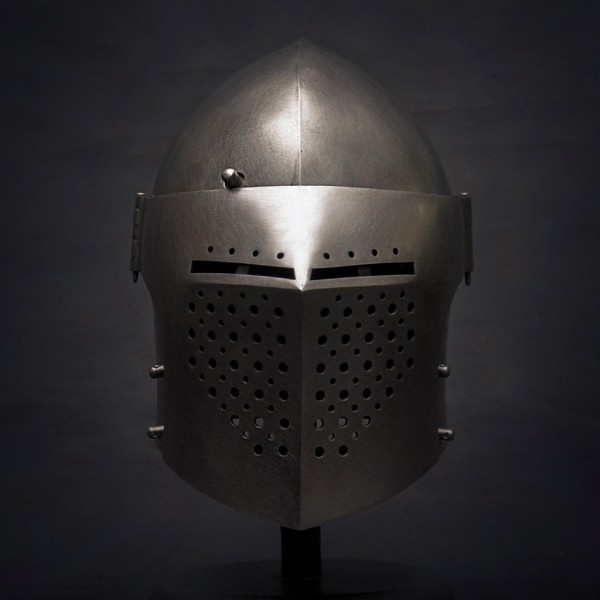
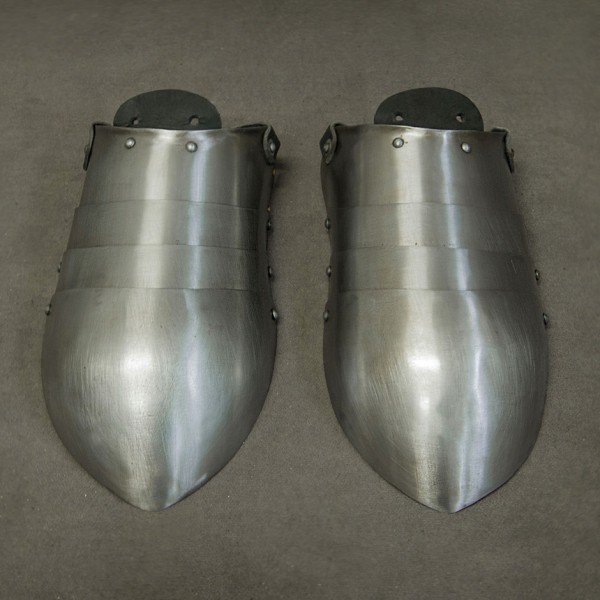
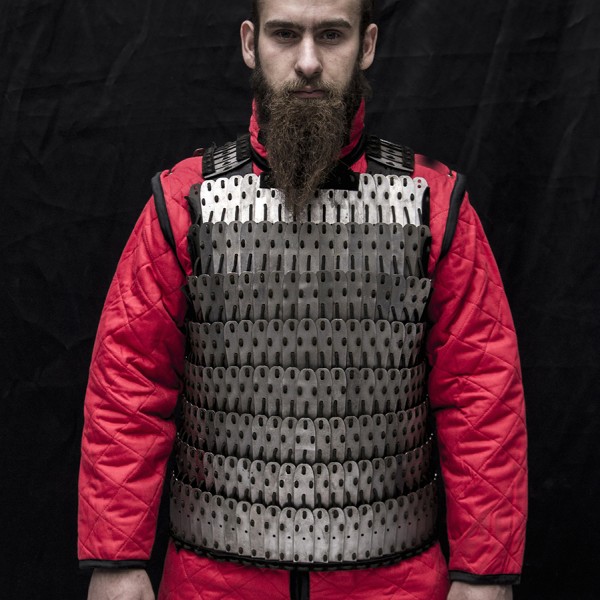

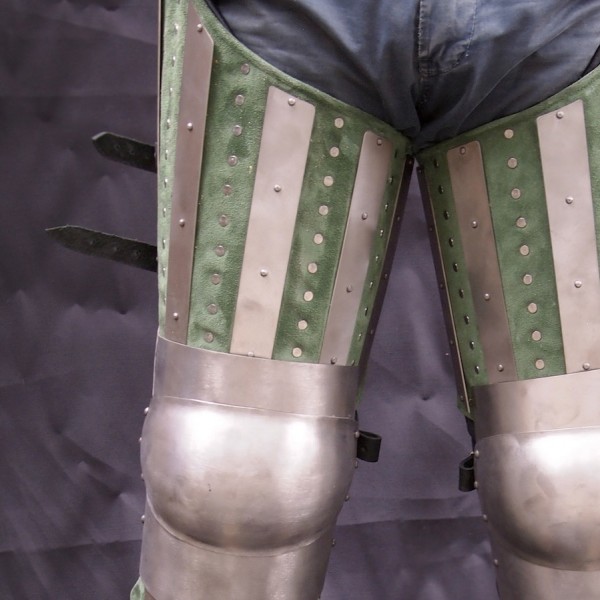

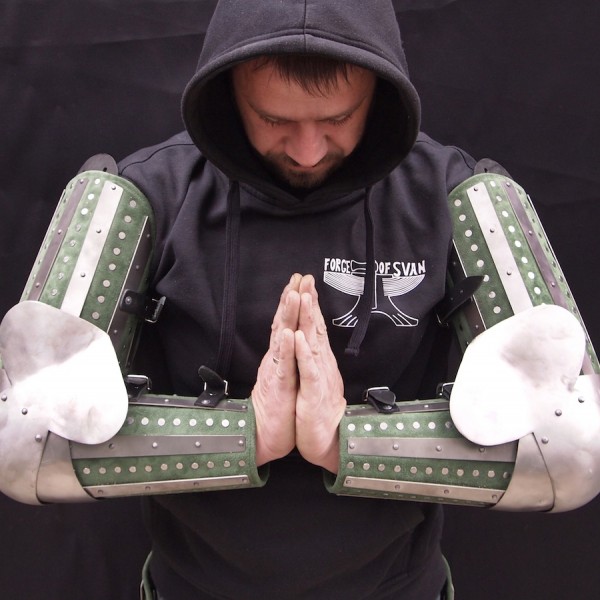
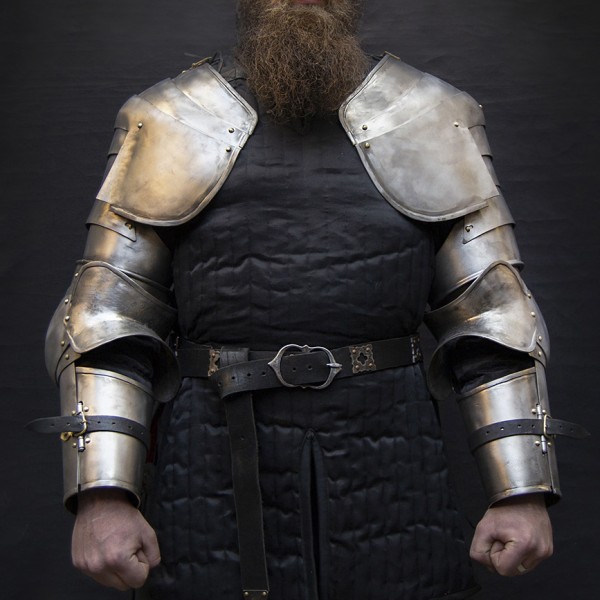
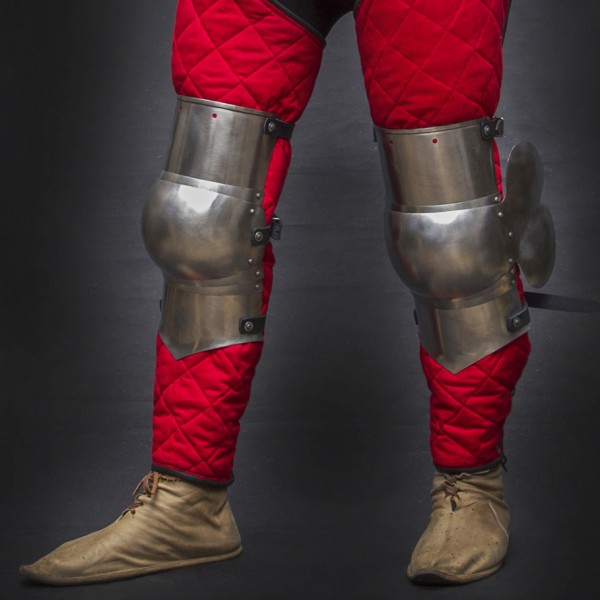
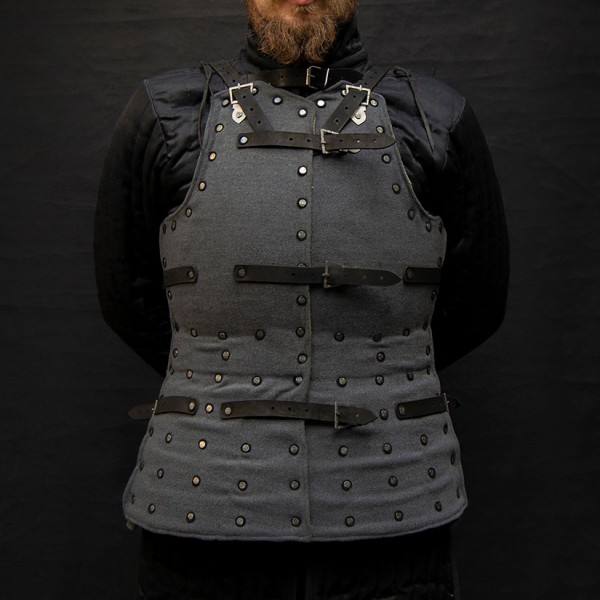
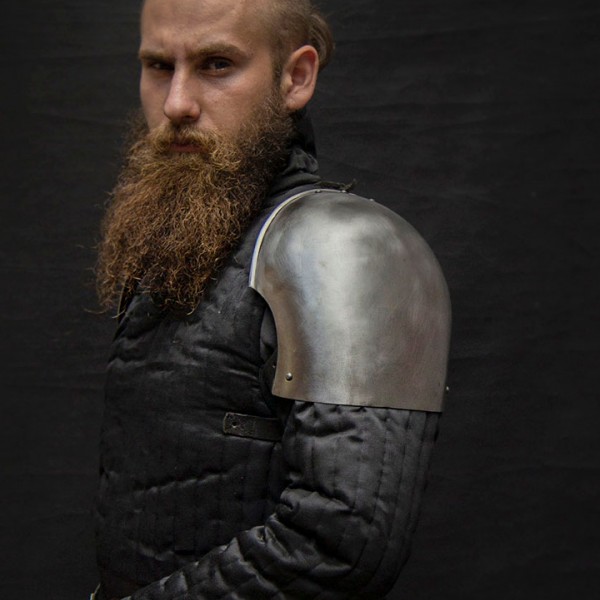
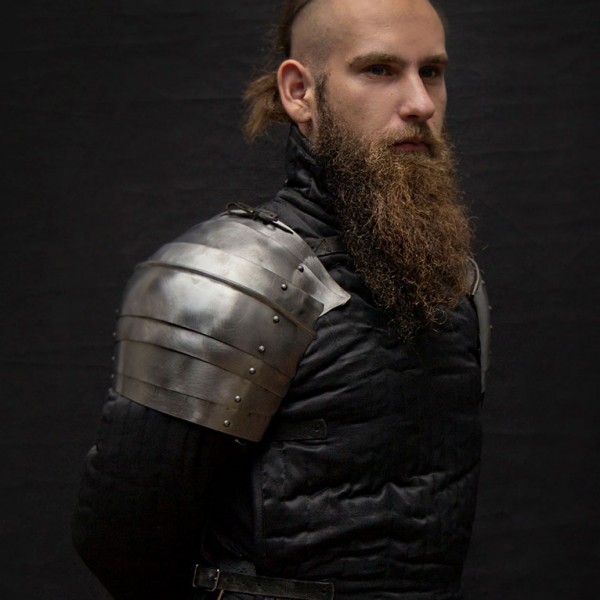
 Shop
Shop